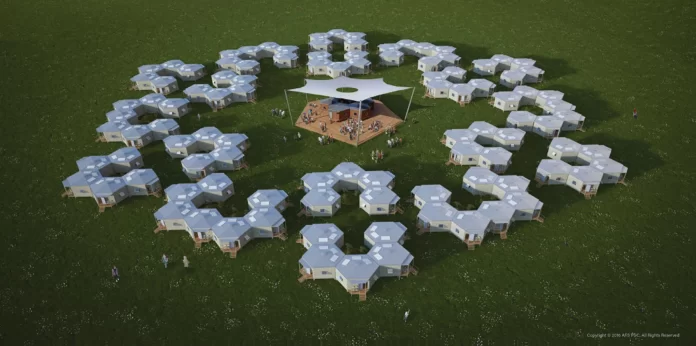Natural disasters, pandemics, and man-made disasters are unpredictable events that can lead to catastrophic consequences. In the face of such situations, having a well-prepared disaster shelter is vital to ensure the safety and survival of you and your loved ones. In this article, we will provide an in-depth guide on how to create a disaster shelter that can withstand various types of emergencies.
Identifying Your Shelter’s Purpose and Location
The first step in creating a disaster shelter involves understanding its purpose and identifying the best location for it. A shelter’s purpose should be based on the specific types of disasters common to your areas, such as hurricanes, tornadoes, earthquakes, or floods. Based on this information, you can design a shelter to withstand the potential hazards of those disasters.
When selecting a location, it must be easily accessible to you and your family during an emergency, preferably in a central area within your home, such as a basement or first-floor room with limited windows. If a suitable location isn’t available in your home, consider utilizing an outdoor option, such as a dugout shelter or a nearby public disaster shelter.
In some cases, finding an appropriate storage facility for your preparedness supplies is just as important. A useful resource to search for is by entering “24 hour storage near me,” online as it can provide a secure location for storing disaster supplies.
Designing and Building a Secure Shelter
Once you have identified the purpose and location of your disaster shelter, the design and construction process begins. The design should include sturdy materials that can withstand the specific hazards of the disasters you are preparing for, and it should have enough space for your family and necessary supplies.
Hiring a professional to help design and construct your shelter is recommended, as they would be able to ensure that the shelter meets the required safety standards. This can involve the installation of reinforced walls, impact-resistant doors, adequate ventilation systems, and waterproofing. In some cases, integrating an underground shelter is an effective option for protection against certain disasters, including tornadoes and earthquakes.
Stocking Essential Supplies
An essential aspect of a disaster shelter is the proper stocking of necessary supplies. You should have sufficient food, water, and medical essentials to sustain your family for at least three days. Non-perishable food items and long-lasting water supplies are critical components of a well-prepared shelter.
An excellent source for emergency rations and provisions is RoundhouseProvisions.com, which offers a variety of long-shelf-life food products specifically designed for disaster situations. Additionally, it is crucial to have a well-stocked first aid kit, including essential medications and tools to address potential injuries or health concerns during an emergency.
Other necessary supplies include a battery-powered radio to receive vital information, flashlights, extra batteries, blankets, sleeping bags, and a change of clothes for each family member. Remember to frequently check and replace any expired or damaged items in your shelter to maintain its readiness.
Establishing a Family Emergency Plan
Once your disaster shelter is in place and stocked with essential supplies, it is vital to establish a family emergency plan. All family members should be informed about the location of the shelter and the quickest route to access it during an emergency. Create a plan for safe evacuation if it becomes necessary, as well as a communication strategy to stay connected with relatives or friends.
Schedule regular emergency drills with your family to ensure that everyone is confident in their understanding of your disaster plan. This will help reduce confusion and panic during an actual emergency and greatly increase your family’s overall safety.
Maintaining an emergency contact list is also essential, including the contact information of local emergency services, medical facilities, and trusted neighbors. Keep a copy of this list in your disaster shelter and provide one to each family member for quick reference in times of need.
Altogether, creating a disaster shelter requires planning, investment, and dedication to the safety and well-being of your family. By following these steps and having a secure, well-stocked disaster shelter in place, you will be better prepared to face any unexpected emergencies with resilience and confidence.








